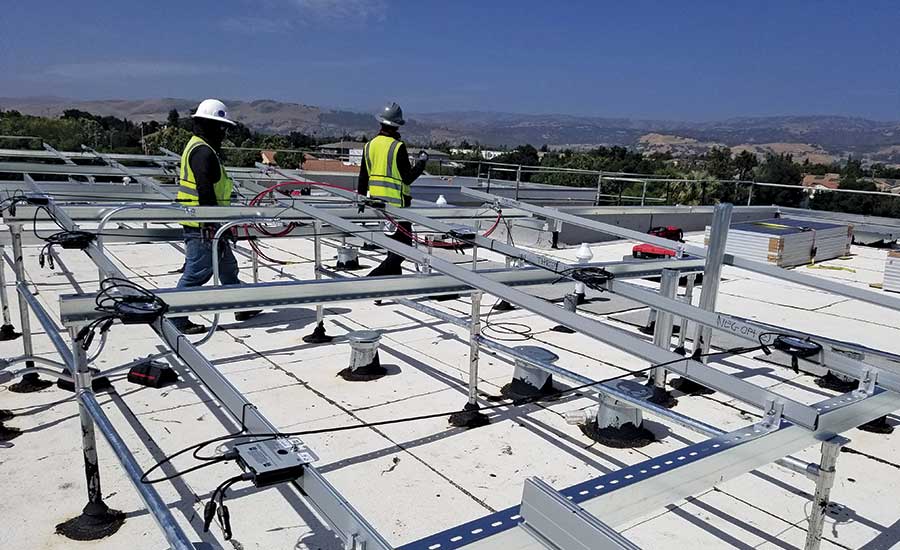After approving a 2019 building code that requires all new homes in the state to have rooftop solar panels starting in 2020, the California Energy Commission is now eyeing commercial buildings.
“We are not big fans of increasing the costs of construction, but from a political perspective,” the state’s policy direction was clear, says Bob Raymer, technical director at the California Building Industry Association (CBIA). For the past decade or so, California has been working toward a policy of achieving net zero energy for all buildings. In about six months, the California Energy Commission (CEC) will begin discussions about the 2023 iteration of the building code with a focus on commercial buildings, and solar will be part of those discussions, CEC spokesperson Amber Beck says.
The 2023 code will include new commercial buildings, high rises of four stories or more and existing residential and commercial buildings, says Raymer. Reaching an agreement on including solar on such varied commercial buildings will be tough, Raymer says.
It was difficult enough to reach agreement on residential homes. For the new code, the CBIA spent a lot of time negotiating with the CEC and other stakeholders to arrive at a compromise.
As originally envisioned, the 2019 energy code would have required installing $30,000 worth of solar paneling on each home. “That would not fit on most homes,” Raymer says. The CBIA negotiated that to $10,000 and won a couple of other key options. For instance, the solar panel goal can be met by building an offsite community solar program or by making a solar power purchase agreement available to owners of new homes.
In addition to the solar requirement, the 2019 building energy standards also include updated thermal envelope standards to prevent heat transfer between the interior and exterior of buildings, residential and nonresidential ventilation requirements, and nonresidential lighting requirements. The standards also give homeowners credit for installing batteries to capture energy from their solar panels for use during the evening.
But as the CBIA looked to transfer similar requirements to commercial buildings, it found that, for example, a high rise in Sacramento might need up to 9½ acres of solar power, but only has one acre on its roof. Finding a solution to that kind of problem “is going to be one heck of a challenge,” Raymer says.
Another obstacle the CEC could face is backlash over the expense of rooftop solar under the 2019 code.
The California Energy Commission estimates that, on average, the 2019 standards will increase the cost of building a new house by about $9,500, but will save $19,000 in energy and maintenance costs over 30 years. Based on a 30-year mortgage, the CEC estimates the standards will add about $40 per month for the average home, but save consumers $80 per month on heating, cooling and lighting bills. Not everyone agrees with those calculations, however.
“I, along with the vast majority of energy economists, believe that residential rooftop solar is a much more expensive way to move towards renewable energy than larger solar and wind installations,” economist Severin Borenstein at the Energy Institute at Haas at the University of California, Berkeley, wrote in a letter to CEC Chairman Robert Weisenmiller.
Borenstein noted the calculated savings for rooftop solar are based on residential electricity rates that are far above the actual cost of providing incremental energy.
If that criticism gains traction, the CEC could have a tougher time putting a solar mandate on commercial buildings.
If the CEC is able to move a commercial solar mandate forward, Raymer sees it as a good opportunity, particularly if it includes existing buildings.
California’s existing residential building stock is approaching 14 million dwellings, about two-thirds of which were built before the energy code went into effect. That represents an “enormous greenhouse gas reduction potential,” he says, and “massive potential for job growth and safety for the building trades.”


Post a comment to this article
Report Abusive Comment